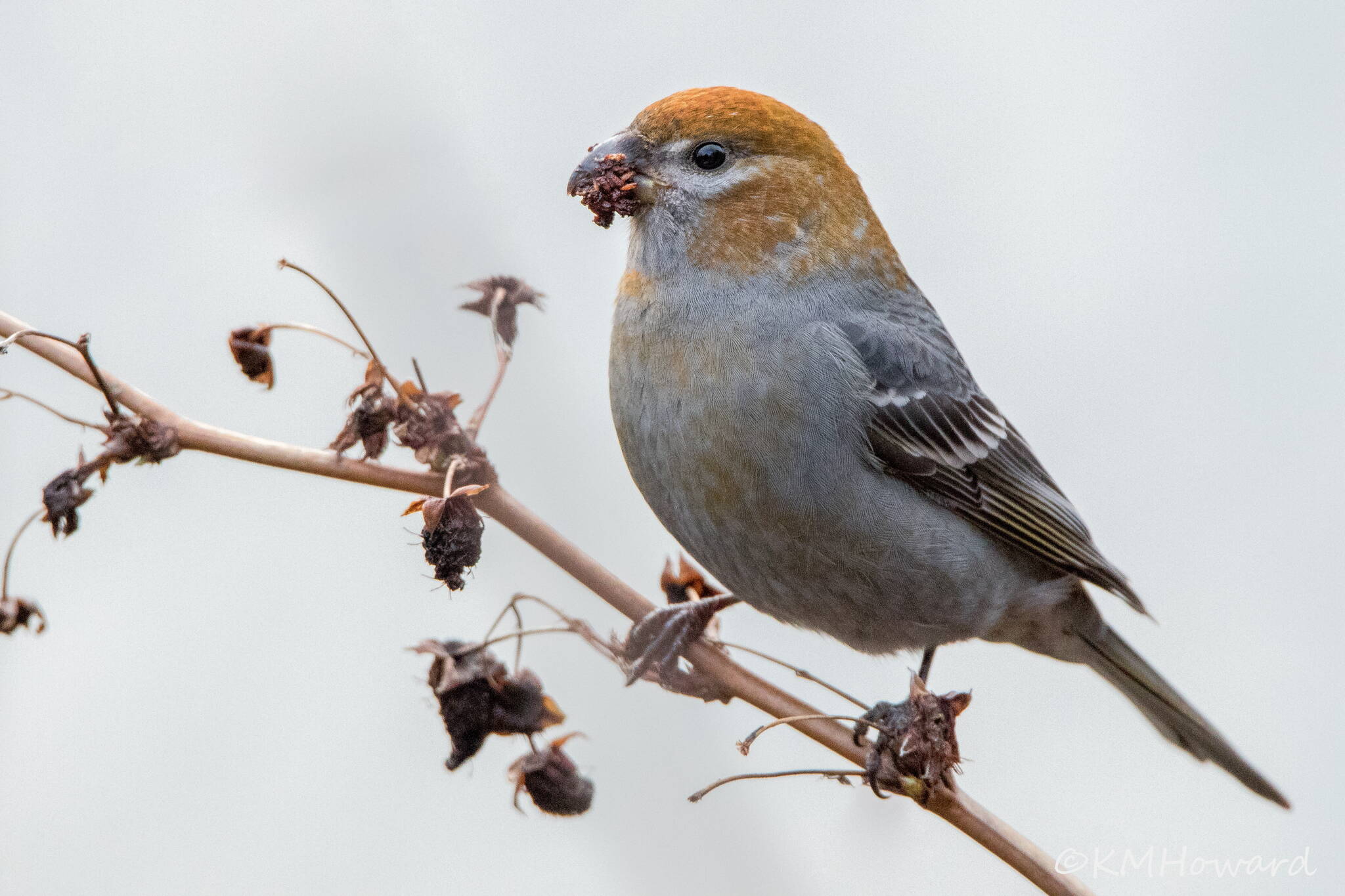February had an extra day this year, a cold and gusty one. Those gusts were enough to knock me off balance and make it temporarily impossible to open or shut my car door. So walking on Sandy Beach was not a pleasant option and I walked with a friend in the woods on the Treadwell trail instead. A light, fluffy snow lay atop the old, hard snow, making excellent conditions for finding animal tracks. It’s always fun to see if we can figure out what the critters were doing. This trip turned out to be productive.
Red squirrels had been busy, of course, with their usual affairs. There were lots of delicate trails left by very small mammals, probably shrews. They were so small that they left little mark of their bodies in the trail, but often showed a dragging tail. They had tiny feet and made very short bounds of about three inches or less. Weaving in and out by the shrew trails, we found a weasel (ermine) trail: smaller feet than a squirrel, often making bounds of 10 inches or more. We imagined that fierce predator looking for a hapless shrew.
In the open area near the end of the formal trail, there were lots of snowshoe hare tracks. We easily found alder twigs that were missing their tips, having been clipped off by hungry hares.
The most interesting find was on the snow-covered upper beach, below the area of hare activity. The snow was laced with shrew trails — many dozens of them — virtually all of them going between the wooded beach fringe and the narrow wrack line of algae left by the last high tide, sometimes ducking under a convenient log on the way. Occasionally, a trail made a little loop and scuffle-mark on the way.
We wondered what those little travelers might be getting — why venture out into the open, with so little cover, and travel 10 or 20 feet to visit washed-up algae? Or did they go beyond that, onto the pebbly beach itself? What gave them the clue to go out there; how did they know? I don’t think that shrews normally run about in groups, but this was a lot of trails for just one or two or even three shrews making repeated trips. Two days later, gusty winds still prevailing, all those tracks had been obliterated by blowing snow, although a raven had recently checked out the area where the many shrew trails had been.
We saw other things of interest: a small, loose flock of pine grosbeaks was moving rather rapidly through the understory, sometimes poking at an upright shrub stem, as if checking for edibles. Mainly, however, they visited devil’s club stems, perching on the tips and, after inspecting them, often tweaking off the young terminal bud that was just emerging. They didn’t seem to be interested in un-emerged buds buried deep in the stem tip or in older, slightly larger and harder buds. Pine grosbeaks often feed on buds of various types in winter, including new tips of spruce branches. I’ve seen them eating willow buds, and studies in Finland recorded them regularly eating willow buds and spruce buds. They are best known for their habit of extracting the seeds from highbush cranberry and mountain ash fruits and discarding the fruit pulp. That still leaves the question of what the consequences might be for the now bud-less, terminal devil’s club shoot: can it replace that bud at a later time or is that growth-point dead?
The next day, I walked with another friend on the Outer Point trail. A stiff cold breeze came from the north, but we were spared the nasty gusts. The snow there was light and fluffy, and the beach fringe and upper beach gave us entertainment. There were tracks of a mouse (or a large vole), which had scurried around among the young alders, often making bounds of five inches or so. Small birds, maybe juncos, had hopped way out onto the snowy beach, leaving lots of trails. Scattered over the snow surface were numerous spruce seeds, perhaps shaken out of their cones by the winds. Surely those foragers were removing as many of those seeds as they could.
Although I’ve looked for recent porcupine tracks in several places, I have found none. That seems strange.
• Mary F. Willson is a retired professor of ecology. “On The Trails” appears every Wednesday in the Juneau Empire.

